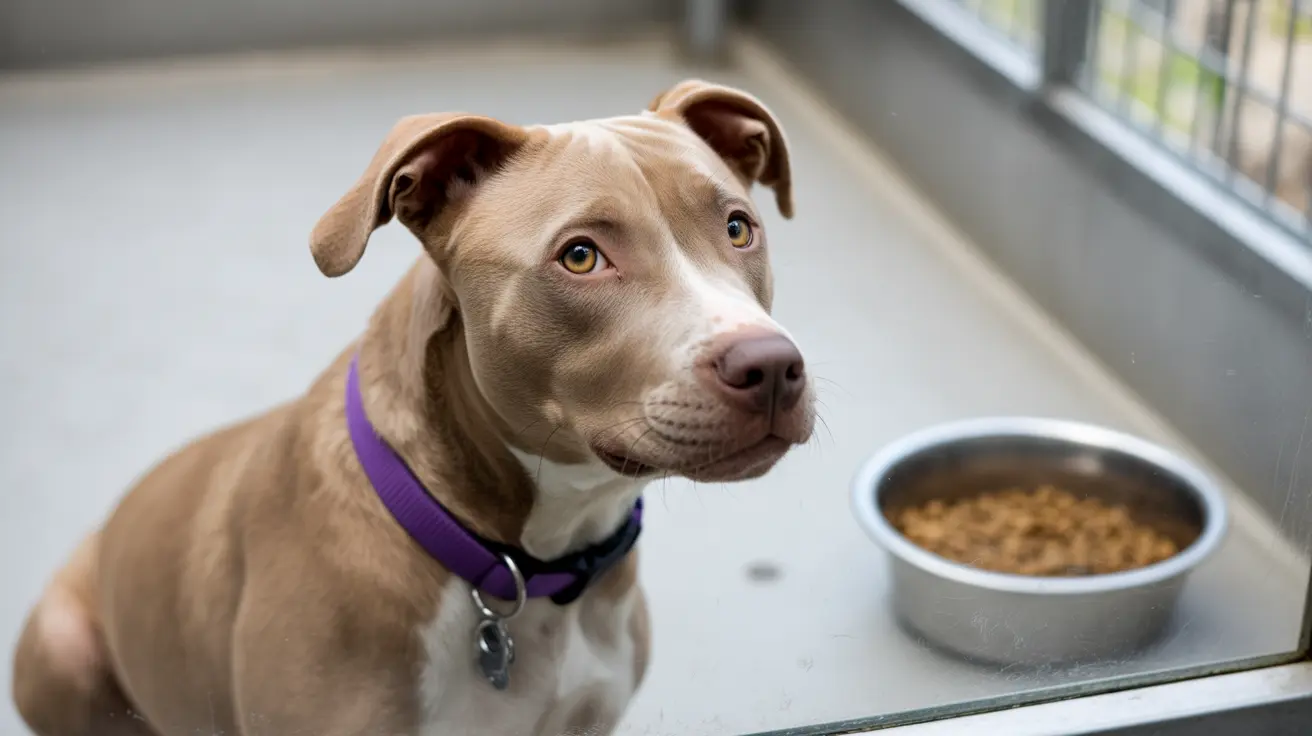Are Cookies Safe for Dogs? A Complete Guide to Holiday Treats and Pet Safety
As dog owners, we often want to include our beloved pets in holiday celebrations and special moments. The sight of those pleading eyes while we enjoy our favorite cookies can be hard to resist. However, the question "are cookies safe for dogs?" requires a serious answer that could protect your pet's health and life.
Most human cookies contain ingredients that are not only unhealthy for dogs but can be potentially dangerous or even toxic. Understanding which ingredients pose risks, recognizing the symptoms of poisoning, and knowing safe alternatives can help you make informed decisions about treats for your furry family member during the holidays and beyond.
This comprehensive guide will explore why traditional cookies are unsafe for dogs, what ingredients to avoid, how to recognize emergency situations, and provide you with safe, healthy alternatives that will keep your dog happy and healthy during celebrations.
Why Traditional Cookies Are Dangerous for Dogs
The simple answer to whether cookies are safe for dogs is that most human cookies pose significant health risks to our canine companions. Dogs have different digestive systems than humans, making them unable to properly process many ingredients commonly found in baked goods.
Most human cookies are unsafe for dogs because they contain carbohydrates and sugars, which are difficult for dogs to digest. These ingredients can contribute to gastrointestinal upset, lethargy, allergic reactions, and other unpleasant side effects for your pet. The high sugar, fat, and carbohydrate content in cookies can overwhelm a dog's digestive system, leading to immediate discomfort and long-term health issues.
Even seemingly harmless plain cookies made with basic ingredients like butter, flour, and sugar are not healthy options for dogs. While they may not be immediately dangerous for most dogs, they offer no nutritional value and can contribute to obesity, dental problems, and digestive upset when consumed regularly.
Toxic Ingredients Commonly Found in Cookies
Several ingredients commonly used in human cookies are toxic to dogs and can cause serious health complications or death. Understanding these dangerous ingredients is crucial for every dog owner.
Chocolate: The Most Well-Known Danger
Chocolate toxicity arises from theobromine and caffeine, substances that dogs metabolize slowly. Dark chocolates and baker's chocolate have the highest levels of theobromine and are more toxic than milk chocolate. Even small amounts of chocolate chip cookies can be dangerous, and cookie dough with chocolate is dangerous even in small amounts because of the concentrated toxic compounds.
Clinical signs of chocolate poisoning include vomiting, diarrhea, increased heart rate, tremors, seizures, and restlessness. The severity of symptoms depends on the type of chocolate consumed, the amount ingested, and the size of the dog.
Xylitol: The Hidden Killer in Sugar-Free Products
Sugar-free cookies often contain xylitol, a sweetener highly toxic to dogs. Xylitol ingestion causes rapid insulin release leading to dangerous drops in blood sugar (hypoglycemia), seizures, and possible liver failure. This artificial sweetener is particularly dangerous because it can cause life-threatening symptoms within minutes of consumption.
Symptoms of xylitol poisoning include vomiting, weakness, tremors, inability to walk, and seizures. Immediate veterinary attention is essential when xylitol ingestion is suspected.
Other Dangerous Ingredients
Several other common cookie ingredients pose risks to dogs:
- Raisins and grapes can cause kidney failure
- Macadamia nuts can cause weakness, tremors, and hyperthermia
- Raw eggs in cookie dough can lead to food poisoning
- High amounts of nuts can cause digestive upset and potential allergic reactions
Health Risks Associated with Cookie Consumption
Feeding dogs human cookies can result in several serious health complications, both immediate and long-term. Understanding these risks helps emphasize why cookies are not appropriate treats for dogs.
Immediate Health Risks
There are several health risks of feeding dogs human cookies that can manifest quickly:
- Allergic reaction to ingredients such as wheat flour
- Choking hazard, depending on the dog's size
- Food poisoning from raw eggs in cookie dough
- Stomach upset causing vomiting and abdominal pain
- Xylitol toxicity from sugar-free cookies containing xylitol
Long-Term Health Consequences
Regular consumption of cookies can lead to chronic health issues:
- Development of diabetes from high sugar intake
- Obesity due to high fat content
- Tooth decay from sugar causing cavities
- Digestive system damage from repeated exposure to inappropriate ingredients
Recognizing and Responding to Cookie Poisoning
If your dog accidentally consumes cookies, quick action can be life-saving. Knowing what to look for and how to respond is crucial for every dog owner.
Warning Signs to Watch For
In the event your dog eats cookies, monitor for symptoms such as vomiting, diarrhea, lethargy, and loss of coordination. These symptoms may appear within minutes to 12 hours after consumption, depending on the toxic ingredient involved. Other warning signs include increased heart rate, tremors, seizures, restlessness, weakness, and inability to walk normally.
Immediate Response Steps
When you discover your dog has eaten cookies, take these immediate steps:
- Check the ingredients for toxins like chocolate, raisins, and xylitol
- Note the quantity consumed and your dog's weight
- Contact your veterinarian immediately if any signs arise or if toxic ingredients were consumed
- Do not wait for symptoms to appear if you know toxic ingredients were consumed
- Keep the cookie packaging to show the veterinarian the exact ingredients
Prompt veterinary care is critical, especially when chocolate or xylitol poisoning is suspected. Time is of the essence in treating these toxic exposures.
Safe Cookie Alternatives for Dogs
While human cookies are generally unsafe, there are ways to include your dog in treat time safely. The key is choosing or making treats specifically designed for canine health and nutritional needs.
Commercial Dog-Specific Treats
Healthier treat alternatives include dog-specific biscuits made with safe ingredients like pumpkin, peanut butter, and oats. These commercially available options are formulated to meet dogs' nutritional needs while providing the enjoyment of a special treat.
Homemade Dog Treat Options
Homemade dog treats tailored for canine health are preferable to human cookies. Safe ingredients for homemade dog treats include:
- Oats (provide fiber and are easily digestible)
- Peanut butter (xylitol-free versions only)
- Pumpkin (rich in vitamins and fiber)
- Sweet potatoes (natural source of vitamins)
- Ground beef or other lean meats
- Parsley (can help freshen breath)
Natural Treat Alternatives
Fresh fruits and vegetables can serve as healthy, natural treats for dogs. Safe options include seedless apples, carrots, and blueberries. These provide natural sweetness and nutritional benefits without the risks associated with processed human treats.
Guidelines for Safe Treating
Even when offering safe alternatives to cookies, moderation is key to maintaining your dog's health and balanced diet.
Portion Control and Frequency
Even safe dog treats should only be given in moderation to maintain a balanced diet. Treats should never make up more than 10% of your dog's daily caloric intake. This ensures that your dog continues to receive proper nutrition from their regular dog food while still enjoying special treats.
Choosing the Right Treats
To safely feed your dog cookie-like treats, opt for plain, oatmeal, or peanut butter cookies without xylitol or other harmful ingredients. Avoid any cookies containing chocolate, raisins, nuts, or macadamia nuts. Soft cookies are better than hard or crunchy ones to protect your dog's teeth.
Prevention Strategies
The best approach to cookie safety is prevention. Taking proactive steps to keep dangerous treats away from your dog protects them from accidental poisoning.
Secure Storage Solutions
Prevent accidental cookie ingestion by storing cookies and chocolate products securely out of your dog's reach, using child-proof containers or locked cabinets. Consider the climbing and jumping abilities of your particular dog when determining safe storage locations.
Education and Communication
Educate family members and visitors about the dangers of feeding human treats to pets. Make sure everyone in your household understands which foods are off-limits for your dog, especially during holidays when treats are more abundant.
Holiday Safety Planning
During holiday celebrations, designate safe spaces for your dog and ensure all guests know not to share human food. Consider preparing special dog-safe treats so your pet can participate in the celebration without the risks.
Frequently Asked Questions
Can dogs eat plain sugar cookies?
Plain sugar cookies are not recommended for dogs. While they may not contain immediately toxic ingredients like chocolate or xylitol, they are high in sugar and fat, which can cause digestive upset, obesity, and dental problems. The high carbohydrate content is also difficult for dogs to digest properly.
What should I do if my dog ate chocolate chip cookies?
If your dog ate chocolate chip cookies, contact your veterinarian immediately. Check the ingredients and estimate the amount consumed. Monitor for symptoms like vomiting, diarrhea, increased heart rate, tremors, or seizures. Do not wait for symptoms to appear, as chocolate toxicity can be life-threatening.
Are oatmeal cookies safer for dogs than other types?
Oatmeal cookies may be slightly less harmful than chocolate chip cookies, but they still contain sugar, butter, and other ingredients that are not healthy for dogs. If you want to give your dog an oatmeal treat, make homemade dog biscuits using dog-safe ingredients like plain oats, peanut butter (xylitol-free), and minimal natural sweeteners.
How quickly do symptoms appear after a dog eats toxic cookies?
Symptoms can appear within minutes to 12 hours after consumption, depending on the toxic ingredient. Xylitol poisoning symptoms can occur within 10-60 minutes, while chocolate toxicity symptoms typically appear within 6-12 hours. Some symptoms may be delayed, so immediate veterinary consultation is recommended regardless of when symptoms appear.
Can I give my dog store-bought dog cookies instead?
Store-bought dog cookies are generally safer than human cookies, but you should still read ingredients carefully. Look for products made with natural, dog-safe ingredients and avoid those with artificial preservatives, excessive sugars, or unknown additives. High-quality, reputable brands that focus on canine nutrition are the best choices.
What are the best homemade treat recipes for dogs during holidays?
Safe homemade dog treats can include combinations of oats, peanut butter (xylitol-free), pumpkin, sweet potato, and lean ground meat. Simple recipes using these ingredients, baked into small, soft treats, provide a healthy alternative that allows your dog to participate in holiday celebrations safely.
Is raw cookie dough more dangerous than baked cookies for dogs?
Yes, raw cookie dough is more dangerous than baked cookies. Raw dough contains raw eggs that can cause food poisoning, and the dough is especially unsafe in large amounts due to high concentrations of sugar, fat, and carbohydrates. Additionally, raw dough with chocolate is dangerous even in small amounts because of the concentrated toxic compounds.
Conclusion
The question "are cookies safe for dogs?" has a clear answer: human cookies pose significant health risks to our canine companions and should be avoided. From toxic ingredients like chocolate and xylitol to digestive issues caused by high sugar and fat content, cookies can cause serious health problems ranging from stomach upset to life-threatening poisoning.
However, this doesn't mean your dog has to miss out on special treats during celebrations. By choosing or preparing dog-safe alternatives using ingredients like oats, pumpkin, and lean meats, you can include your pet in holiday festivities without compromising their health. Remember that even safe treats should be given in moderation, and when in doubt, consult your veterinarian before introducing new foods to your dog's diet. Your pet's safety and health should always be the top priority when it comes to treating and celebrating together.






